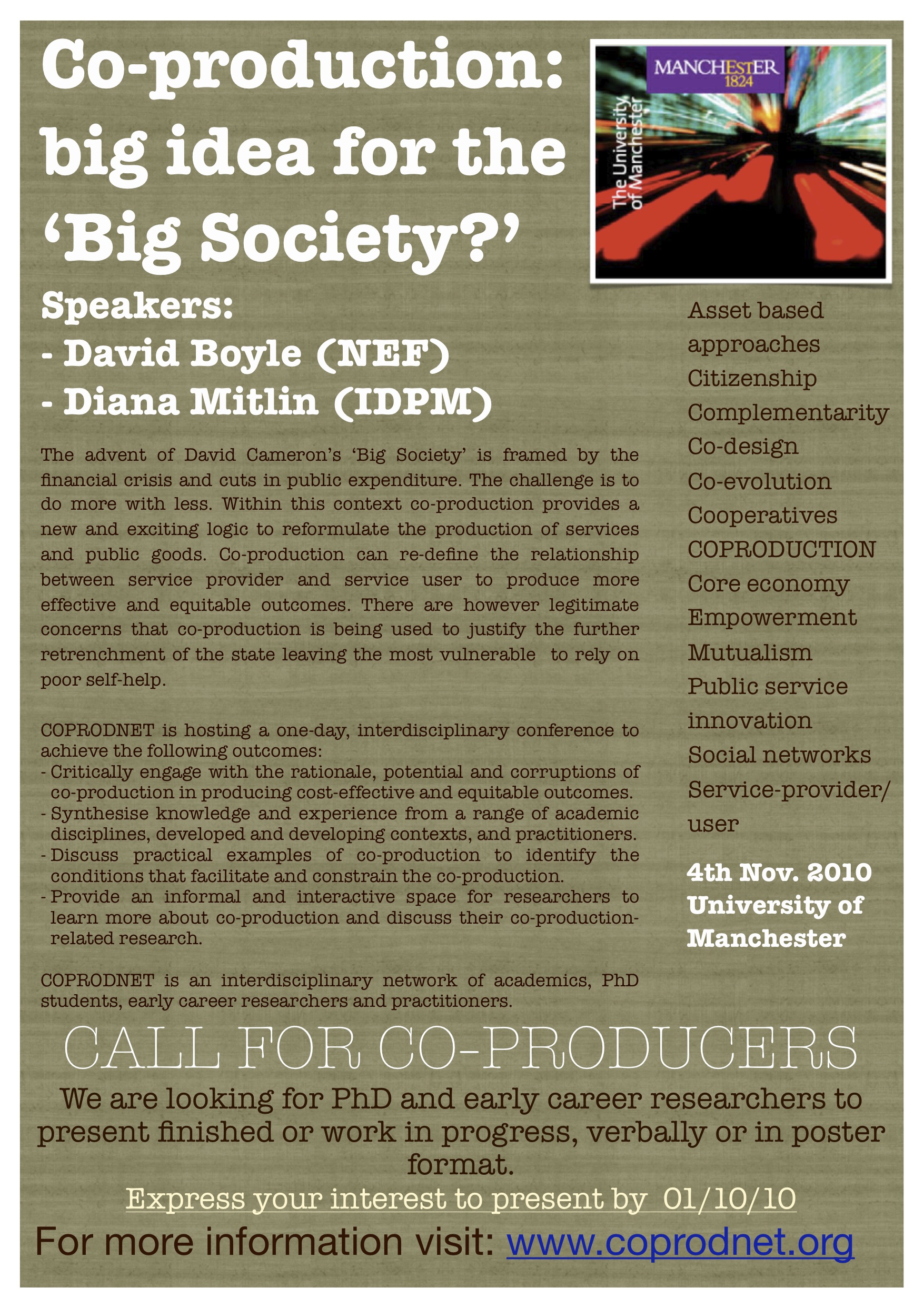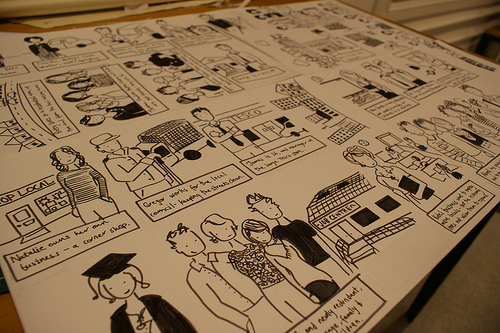Call for co-producers
Last week Snook ventured to Manchester to attend 'Co-production: big ideas for the 'Big Society?'
 David Boyle began the event by presenting the case for co-production in the UK. Focusing on where it came from , what it isn't and the implications for public services. Colin Torbit opened up saying 'The state wouldn't work without co-production'.
David Boyle began the event by presenting the case for co-production in the UK. Focusing on where it came from , what it isn't and the implications for public services. Colin Torbit opened up saying 'The state wouldn't work without co-production'.
David shared many examples, mainly from USA: a youth court scheme in Brooklyn focused on how to persuade young people to be advocates of good behaviour.
The term co-design isn't new. It emerged at the University of Indiana in the 1970s, when a professor, Elinor Ostrom, was asked to explain to the Chicago police why the crime rate went up when they exchanged the beat for patrol cars. Coproduction was the missing ingredient to crime fighting that only the public could provide. It's true that services need their users as much as the users need the services.
David compared co-producers to Michelangelo, he used to say that his statues existed already, as people behind the marble. I wonder, as a craftsman, if he could hear them whispering - just on the other side, separated by the smallest sliver of beautiful stone. He also spoke of the longevity of co-produced projects and initiatives - what to do when the professional help moves on? You need to have a support network in place to keep the momentum going. You can watch the key note speakers in the video below:
[vimeo http://www.vimeo.com/16650403]
Edgar Cahn, is described as a relentless social innovator and is known as the pioneer of co-production.
"Every capacity that has enabled our species to survive, such as caring for each other, trusting each other, relying on each other, has become excluded from our economic system. And I realised that there was no way we were going to build communities we wanted to live in if we didn't completely reassess our value system and start rewarding human as well as financial contributions.
I started this in the age of Reagan and Thatcher and, boy, haven't we come a long way since then? Your politicians talking about community cohesion at the party conferences would have been laughed off the stage back then, so maybe we're moving in the right direction."
We took part in a break out session with Julia Slay from NEF where we focused on "Co-production in social care". Kathryn, founder of We Care Design led a discussion on the isolating experience of being a carer. We explored examples such as Tyze.com and Mihealth. Other groups focused on answering: who are we evidencing co-production to? how can we justify spending on co-production? what skills are required to co-produce? what structures are required to adopt co produced services?
Proofessor Diana Mitlin spoke more about power relationships and horizontal relationships within communities. We heard from Sekia and Davious from the Zimbabwe Homeless People's Federation - a truly inspiring project illustrating how people can make change happen for themselves. The federation operates a savings scheme (80% of their members are women) which allows the poorest families to invest, purchase their own land and build their own houses. Elements of the projects process could be transferred to other communities in need - after all, says Sekia, being poor is international. It doesn't matter what country you are in. It only the country's by-laws that stop the project from being exportable.
The saving scheme works within existing networks - expanding from family groups, neighbours and friends. The group call in expert help at certain points in the planning - when laying out new settlements, and new dwellings - they consult town planners and architects as well as the people themselves, for the houses need to work for the people who will be living there . It has been proven that unless this happens the people will simply sell the houses and move on.
The project is no longer waiting on the government to step up and and help them, they are now running their own projects, they have turned their backs on the banks that swallowed their money in the past. This small group of people are immensely brave and real pioneers.
Dr Annabel Kiernan lectures at Manchester Metropolitan University, teaching a framework for participation. The first year of the BA (Hons ) Public Services course teaches "The Big Society" - very interesting on many levels!
Sue Goldrich presented a project around developing teachers as researchers within schools in England. As a result, the student's voices became powerful, and in turn, the students became researchers too - taking on the roles that the teachers had initially been planned to fill. The results seemed brilliant for students, but seemed to cause rifts between teachers and cracks began to form between the participating schools.
John Owen spoke about conflict of co-production in a health setting. John talked about bringing personality to the NHS. The fact that patients have a limited voice/autonomy/choice might not be such a bad thing - give them too large a menu and the will not know what to choose. Medical professionals seem to hold a chest of secrets and magic - their skill and expertise is select and specific. History shows patients as compliant, but that is not happening now - what do we do when our medical professionals and patients are not talking/thinking on the same levels?
Ambrose Gillich shared some of his thoughts on co-produced architecture in a post-disaster environment, focused on Hunnarshala in India. People cannot flourish if they do not agree with the idea of what dwellings should look and feel like. Ambrose asked: 'What do humans need from their houses?' This is particularly interesting considering that the community was rebuilding itself - physically and emotionally, after the disastrous consequences of earthquakes, a time when the houses needed to represent the traditional building materials and craftsmanship of the community, yet be safe and substantial to resist the natural disasters to come. It became less of a physical construction project, but a social project, the momentum of which could be used to rebuild communities. The day ended with Su Maddock on stage who talked about reversing power relationships and recommended we all read Mary Parker Follet's 'The new state'
What does all this have to do with design? What is the role of a designer in the co production process? This was a conversation that cropped up time and time again throughout the day, many attendees thinking of 'design' in the traditional sense of being a maker of tables and chairs. There were five designers ( all female ) present at the event - Snook, Kathryn Grace ( Service Designer at Orange ) and Elizabeth Peacock ( recent graduate of Product Design at Glasgow School of Art )
Designers bring things to life. Designers make the intangible tangible. We found ourselves continually justifying the role of professional designers in the co-production process. Why is design important in the context of co-production? Design engages the practical details - designers are not afraid to ask questions. Design includes rational benefits, it turns the political into resource redistribution. Design is about empowerment. I feel strongly that the importance of talent and craft must never be underestimated. Kevin Mc Cullagh echoes this in his article: Stepping Up.
"It’s therefore hard to believe that many anyone can pick up any meaningful design skills after a workshop or two. And, to be frank, suggesting as much devalues what designers do."
Co-production is complex - and it's long term. There are still many unanswered questions:
// Do people know when they are co-producing?
// Do we need a definition?
// How do we know what isn't co-production?
// How do we enable people to communicate what they think?
// Do we need a governance framework to support this way of doing things?
Some of the conversation around definition echoes the frustrations in Service Design where we are guilty of getting caught up on definitions. Definitions are not important. Action is.
Post coming soon about our interactive Co-Production Crusade ....



